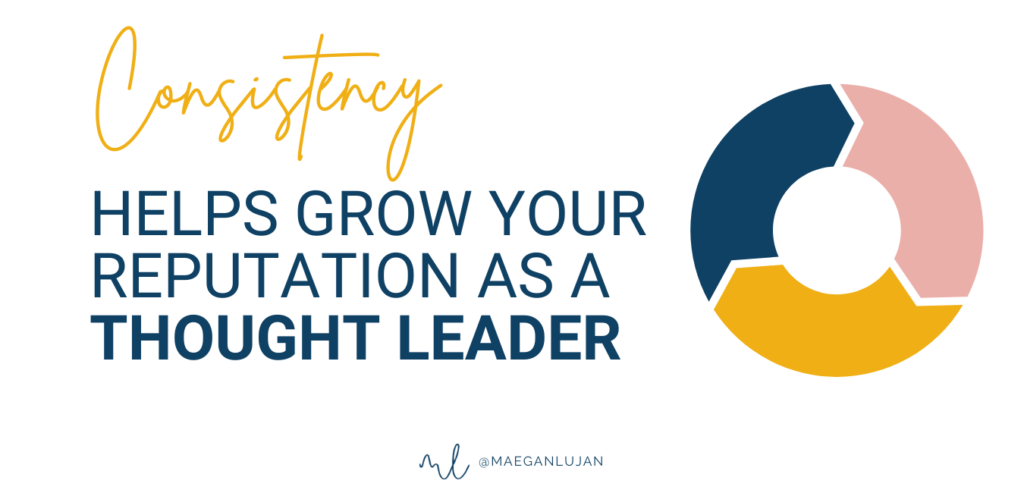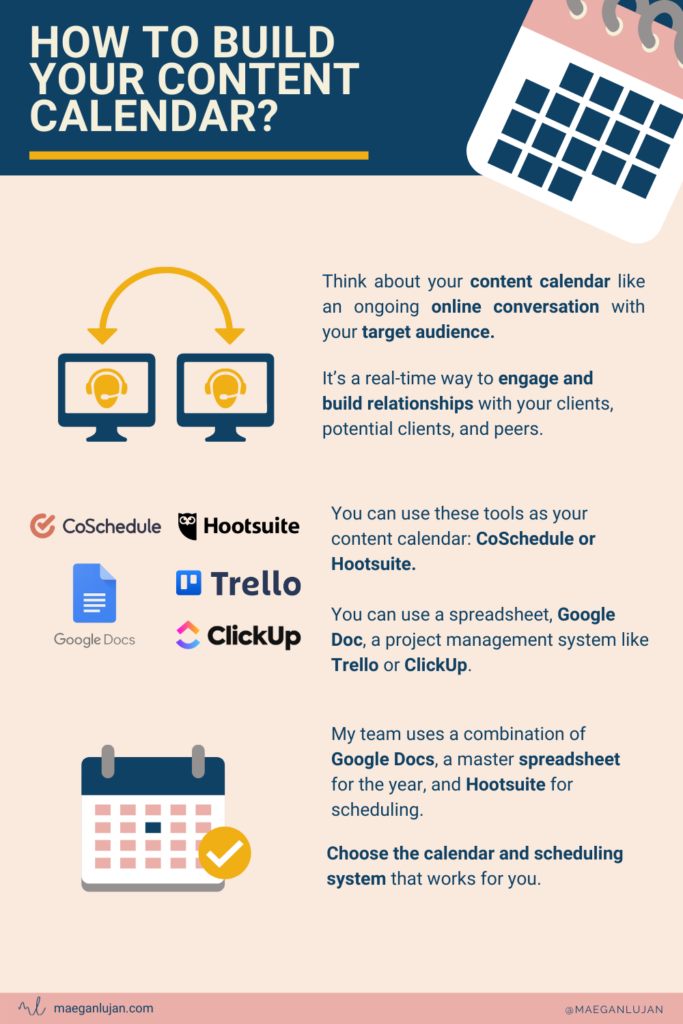If you’ve heard it once, you’ve heard it a million times: Consistency is key.
Consistency also is one of the biggest keys to growing your reputation as a thought leader.
With time as limited as it is for us all, how can you stay consistent with your content?
One of the best ways is to use a content calendar. By definition, a content calendar is a calendar where you create and store your content to share weeks or even months in advance.
This combined with the right strategy—including what to post, how to post, and when to post—will save you time and keep you focused and consistent with your brand voice.
Why Content Is Important
Creating content for online consumption takes a lot of time and energy. So why even create it?
Because strategic content attracts the right people to you. It opens opportunities.

Strategic content also helps you grow in your life and career. Plus, it allows you to share your knowledge and skills while empowering others to do the same.
Finally, strategic content gives you a voice in the world and grows your brand—the one digital asset you own.
What Is Thought Leadership Content
There are many different types of content. A few include roundups, how-to posts, and behind-the-scenes sneak peeks. Thought leadership content, however, is an approach to your content strategy rather than a specific kind of content.
Thought leadership is about giving and being authentic. It’s about sharing your unique story and view of the world.
Thought leadership can encompass different types of posts and content, but its main goal is to share your knowledge and skills with others while building your personal brand.
How can you apply a thought leadership perspective to your content and fill up your calendar with engaging strategic posts?
By strategically building your thought leadership content into your calendar.
Building Your Content Calendar
Think about your content calendar like an ongoing online conversation with your target audience.
Put another way, it’s a real-time way to engage and build relationships with your clients, potential clients, and peers.
For your actual content calendar, you can use an online program for content calendars like CoSchedule or Hootsuite. You can use a spreadsheet, Google Doc, a project management system like Trello or ClickUp.
Choose the calendar and scheduling system that works for you.
I do recommend, however, that you use a digital versus print calendar to make it easier to copy, paste, and schedule your content.
My team uses a combination of Google Docs, a master spreadsheet for the year, and Hootsuite for scheduling.
Now that you’ve got your format nailed down, it’s time to plan!
Plan Out Your Calendar
Decide how far in advance you want to plan out your content. You can plan content weekly, monthly, or quarterly. I recommend staying at least two weeks ahead. A month is even better.
This way, you have some wiggle room if things come up. Plus, it will help you stay more consistent.
Next, decide how often you will post.
I choose to post on most weekdays with occasional weekend posts.

How often you should post really depends on the platform and your content goals. Hootsuite has a great guide here to help you decide.
Then, you want to check for any events, launches, holidays, and sales during your planning period.
National holidays and marketing holidays can be good to include in your content calendar as they often have popular hashtags and can help you reach new people. Just make sure they are relevant to your brand and that you’re mixing in evergreen content, too.
If you’re planning any sales and launches for your products and services, make sure to include those in your content calendar. Also, pay attention to launches and sales for affiliate products you participate with.
Now that you’ve put time into this planning, it’s important to think about the core content pillars of your brand. If you’re not sure about your content pillars, I cover these in detail in my book A Million Little Clicks.
Essentially, you need to have themes that you post around, areas that you can be identified as a thought leader in, and where you can share your knowledge with others.
You’ll want to make sure the content you create fits into these core brand pillars.
Put You In Your Content
A big part of thought leadership content that stands out from other forms of content is your story. As in your personal narrative.
Your story is what makes you stand out. You want to mix this into your content plan in a way that benefits your audience. Don’t make it just about you, but how you can help them.
You don’t have to be controversial to be personal, either. But you do need to share yourself, your story, and yes, your opinions.
Otherwise, you’ll be drowned out by all the noise online. No one ever stood out for not having a unique angle or opinion on anything.
This is also when you can think about content that is already created that you can share in a new way.
Were you recently interviewed on a podcast? Share that in a post on social media.
Have a press article? Share that, too.
Did you write a blog post? You guessed it, share it.
Repurpose your content in different ways.
That’s how you easily fill your content calendar.
Get It Done
Once you’re finished brainstorming your content, it’s time to schedule when you’ll be able to create that content.
If you don’t regularly schedule time to create your content, it won’t get done. Think about when you can fit this in weekly, monthly, etc.
You can start with the copy and then create the graphics that will accompany it.
Put all these pieces in your calendar or system so it’s ready to share when the time comes to schedule it out.
Having systems in place for your content makes staying consistent not only possible but also a lot easier.
Interested in more content calendar tips?
Need an expert’s help in making sure your content is sending the right message to your target audience?
Get on my schedule by clicking here.







